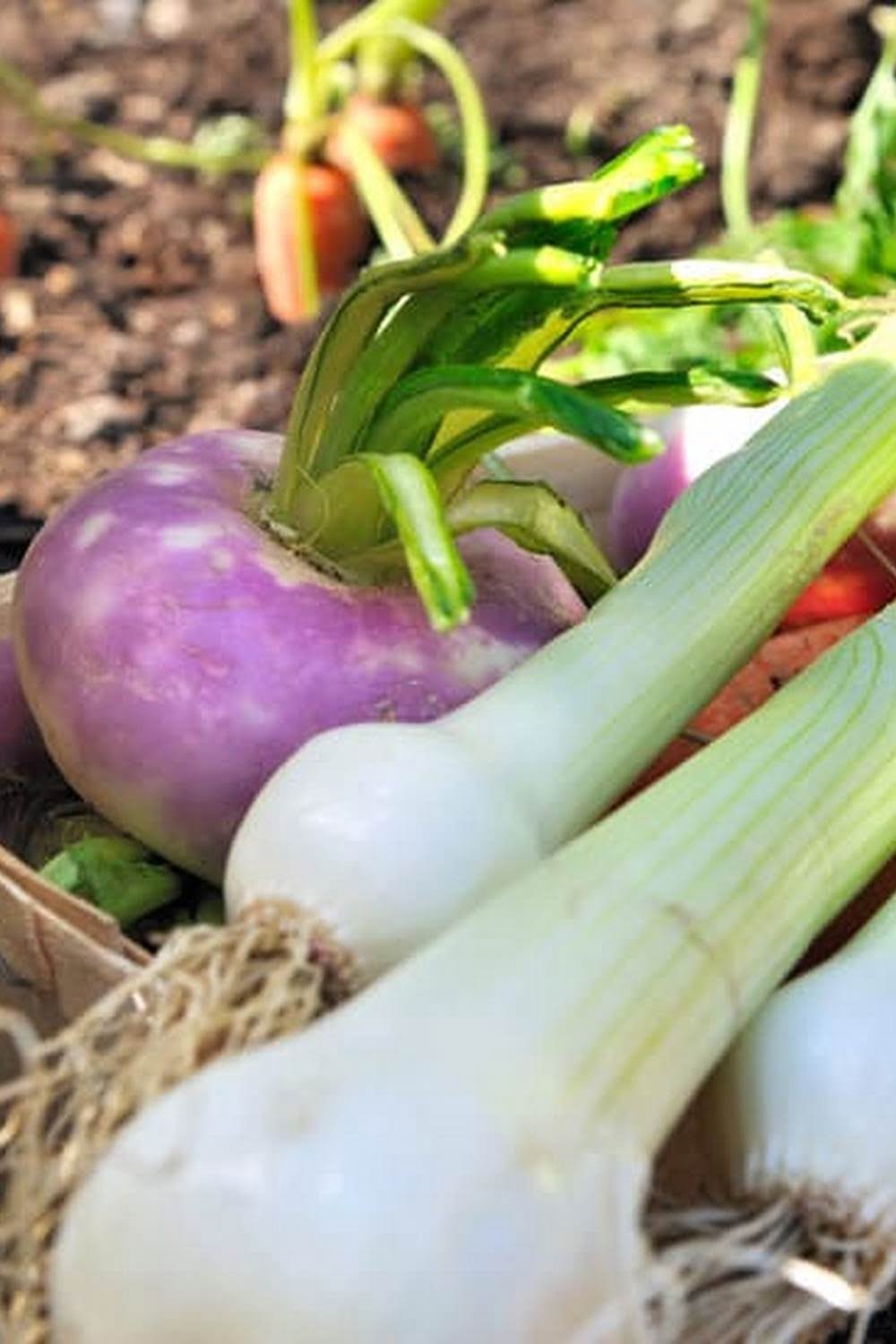How Deep Should A Raised Bed Vegetable Garden Be
?
The answer to this question depends on the type of vegetables you are growing and the climate in which you live.
In general, most vegetables do best when they are planted in soil that is at least 8-12 inches deep. However, there are a few vegetables that can be planted in soil that is only 4-6 inches deep. These vegetables include lettuce, spinach, and radishes.
If you are planting vegetables in a raised bed vegetable garden, the soil should be at least 12 inches deep. This is because the soil in a raised bed is typically warmer and drier than the soil in a traditional garden.
If you are unsure how deep to plant your vegetables, consult your garden center or local agricultural extension office. They will be able to provide you with specific information about the vegetables you are trying to grow.
Planting A Vegetable Garden In A Raised Bed
When it comes to vegetable gardening, there are a few different ways to go about it. You can plant your vegetables in the ground, you can plant them in containers, or you can plant them in a raised bed. Each option has its own set of pros and cons, and each option is better suited for different types of gardens.
If you’re looking for an easy way to get started with vegetable gardening, planting your vegetables in a raised bed is a great option. Raised beds are simple to construct, and they’re perfect for small gardens. They also make it easy to control the soil quality, which is important for growing vegetables.
If you’re interested in planting a vegetable garden in a raised bed, here are a few tips to help you get started:
1. Choose a location for your raised bed. When choosing a location for your raised bed, make sure to think about the sun. You want to choose a spot that gets plenty of sunlight.
2. Select a suitable site for your raised bed. When selecting a site for your raised bed, make sure that the soil is fertile and well-drained.
3. Decide on the size of your raised bed. When choosing the size of your raised bed, keep in mind that you’ll need enough space to accommodate your vegetables.
4. Construct your raised bed. Once you’ve chosen a location and size for your raised bed, it’s time to construct it. You can use a variety of materials to construct your raised bed, such as wood, stone, or concrete.
5. Add soil to your raised bed. Once your raised bed is constructed, it’s time to add soil. Be sure to use a good quality soil that is suitable for growing vegetables.
6. Plant your vegetables. Once your raised bed is filled with soil, it’s time to plant your vegetables. Be sure to follow the instructions that come with your vegetable seeds.
7. Harvest your vegetables. Once your vegetables are ready to harvest, be sure to harvest them regularly so that they don’t go to waste.
If you’re looking for an easy way to get started with vegetable gardening, planting your vegetables in a raised bed is a great option. Raised beds are simple to construct, and they’re perfect for small gardens. They also make it easy to control the soil quality, which is important for growing vegetables.
Companion Planting 4X8 Raised Bed Vegetable Garden Layout
If you’re looking to create a vegetable garden that is both efficient and attractive, consider using a 4×8 raised bed layout. This layout is perfect for those with limited space, and it can be easily adapted to fit any size garden.
When planning your 4×8 raised bed vegetable garden, keep in mind that the most important part of the layout is the spacing of the plants. In order to create a garden that is both attractive and productive, you’ll need to plant your vegetables in a specific pattern.
The following guide will show you how to create a 4×8 raised bed vegetable garden using the companion planting method.
1. Start by planting your taller vegetables in the back of the bed. These vegetables include broccoli, cauliflower, and cabbage.
2. Next, plant your mid-sized vegetables in the middle of the bed. These vegetables include tomatoes, peppers, and zucchini.
3. Finally, plant your smaller vegetables in the front of the bed. These vegetables include lettuce, spinach, and carrots.
4. Be sure to space your plants according to their size. The taller plants should be spaced about 18 inches apart, while the mid-sized and smaller plants should be spaced about 12 inches apart.
5. Water and fertilize your plants regularly, and be sure to harvest them when they are ripe.
By following these simple guidelines, you can create a beautiful and productive 4×8 raised bed vegetable garden.
Giantex Raised Vegetable Garden
Bed is perfect for you to grow your own vegetables, flowers and herbs. By using this garden bed, you can avoid using harmful pesticides and herbicides in your garden. The garden bed is also easy to set up and use.
This garden bed is made of high quality and durable plastic. The plastic is non-toxic and will not rust, rot or corrode. The bed is also easy to clean. The garden bed is raised, so you can avoid kneeling in the dirt and getting your clothes dirty. The bed also has a drainage hole, so the water can drain out easily.
The garden bed is easy to assemble. You just need to snap the pieces together. The bed is also lightweight, so you can move it around easily. The bed can hold up to 550 pounds, so you can grow a lot of vegetables, flowers and herbs. The bed measures 48 inches long x 24 inches wide x 12 inches high.
The Giantex Raised Vegetable Garden Bed is a great way to grow your own vegetables, flowers and herbs. The bed is easy to assemble and use. The bed is made of high quality and durable plastic. The plastic is non-toxic and will not rust, rot or corrode. The bed is also easy to clean. The bed is raised, so you can avoid kneeling in the dirt and getting your clothes dirty. The bed also has a drainage hole, so the water can drain out easily. The bed is lightweight and easy to move around. The bed can hold up to 550 pounds, so you can grow a lot of vegetables, flowers and herbs.
Building A Raised Vegetable Garden On Uneven Ground
A raised vegetable garden is a great way to make the most of an uneven yard. By building a raised bed, you can create a level planting surface that is perfect for vegetables, flowers, or herbs. Not only will this make gardening easier, but it will also help to conserve soil and moisture, making your garden more productive.
There are a few things to consider when building a raised vegetable garden on uneven ground. The first is the height of the raised bed. It is important to make sure that the bed is high enough to provide a level planting surface, but also low enough to allow for easy access. The ideal height is between 12 and 18 inches.
The second consideration is the width and length of the bed. It is important to make sure that the bed is wide enough to accommodate the plants that you want to grow, but also long enough to avoid having to step on the soil. The ideal width is 3 to 4 feet, and the ideal length is 6 to 8 feet.
The last consideration is the type of material that you will use to build the bed. There are a variety of materials that can be used, including stone, brick, concrete, or wood. The most important thing is to make sure that the material is sturdy and will not erode over time.
Once you have considered these factors, it is time to start building your raised vegetable garden. The first step is to mark out the dimensions of the bed. Once you have done that, use a shovel or post-hole digger to create a hole in the ground that is the same depth as the height of the bed. Then, place the material for the bed in the hole and use a level to make sure that it is level. Finally, fill in the hole with soil and pack it down firmly.
Now that your raised vegetable garden is built, it is time to start planting. Be sure to choose plants that are suited for the type of soil and climate that you have. And remember, a raised bed is a great way to make the most of an uneven yard, so don’t be afraid to experiment with different types of plants and flowers.

If you’re looking to get into vegetable gardening, or are just looking for some tips on how to make your current garden better, then you’ve come to the right place! My name is Ethel and I have been gardening for years. In this blog, I’m going to share with you some of my best tips on how to create a successful vegetable garden.





